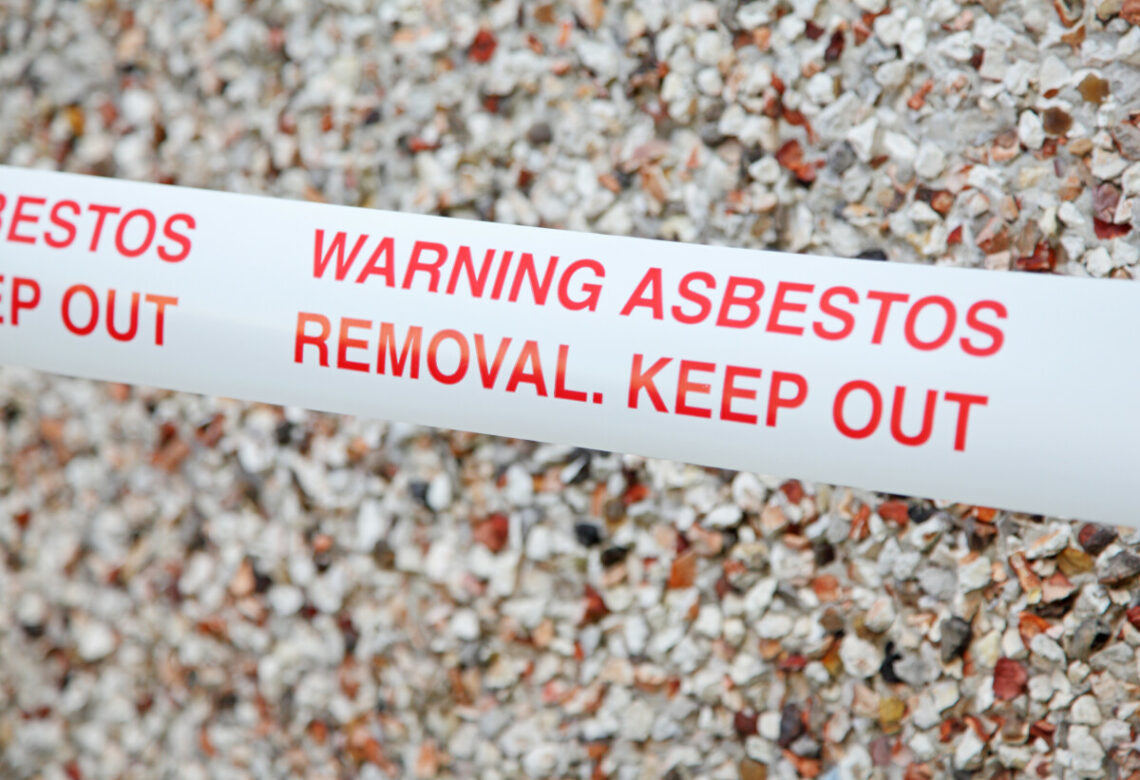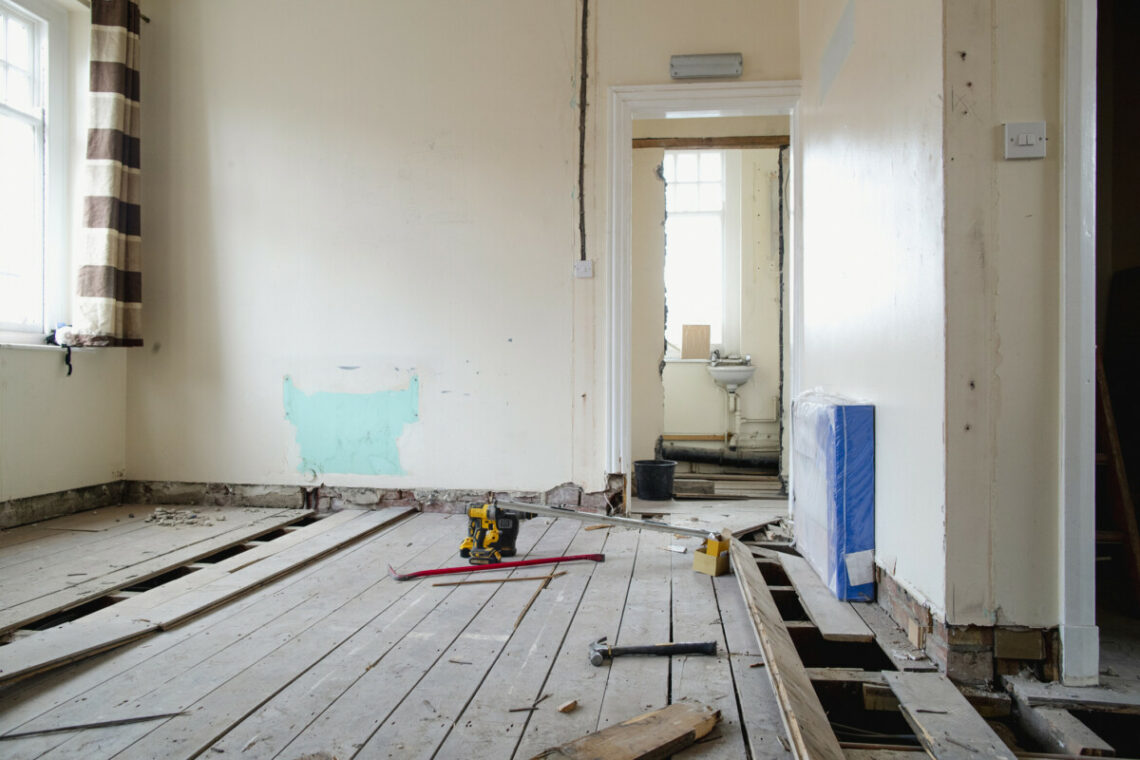Many people are alarmed to learn that their houses may contain asbestos, which can be dangerous. Asbestos exposure can lead to lung cancer and mesothelioma, especially after extended exposure. However, despite its known dangers, asbestos is still present in many buildings and products, making it a continuing threat to people’s health.
As a homeowner, it’s essential to be aware of the potential hazards of asbestos and know how to identify and safely remove it from your home. In this article, we will provide you with a comprehensive guide to identifying, testing, and safely removing asbestos from your home, helping you protect your family and ensure your home is a safe and healthy environment.

What is Asbestos?
Asbestos is a fibrous mineral that is mined from the earth. First industrialized in 1876, it has natural fire-resistant and insulating properties, making it an ideal and inexpensive addition to many construction materials, such as tiling, insulation, and roofing. Its fibers can even be woven into cloth and other materials, making it incredibly versatile and useful in homes worldwide.
However, after decades of use, we learned that inhaling asbestos fibers can cause lung cancer and mesothelioma. The EPA outlawed asbestos in 1989, but the 5th Circuit Court of Appeals overturned that ruling in 1991. While less common than it was and much more highly regulated, asbestos is still legal and common in some products.
Houses built before the mid-1980s are the most likely to have asbestos, and homes built from the mid-1980s until the early 1990s have a smaller but still possible chance.
Where does asbestos come from?
Asbestos comes from metamorphic rocks found around the world. The largest deposits are in Russia, but China, Kazakhstan, Brazil, and Canada are also major producers.
In the US, asbestos was mined in several states, including California, Vermont, and Montana. Libby, Montana, was also home to one of the world’s largest and deadliest asbestos mines before it closed in 1990.
Types of asbestos
There are six types of asbestos. All types of asbestos can cause mesothelioma and are incredibly harmful.
Chrysotile asbestos is the most common variety, comprising 90-95% of asbestos in the US. It’s a curly white material that offers superior heat resistance, fireproofing, and flexibility, which made it incredibly popular for use in products ranging from asphalt, to plastics, to clothing.
Amosite is the second most common variety of asbestos and is common in products ranging from cement, to gaskets, to tiling.

Where can you find asbestos in your home?
Asbestos is primarily found in insulation materials, paints, siding, and tiles. While not as common as in the 1950s, many homes still contain asbestos. Here are the most common places to find asbestos in your home:
- Artificial fireplace logs, embers, and ashes
- Ceiling insulation products
- Corrugated cement roofing
- Drywall and plaster
- Eave linings
- Fireplace pipes and bricks
- Hot water pipes
- Insulation in stoves
- Older domestic heaters
- Tiling and floor coverings
- Textured paints and popcorn ceilings
Asbestos is rarely found in newly built homes. However, it was widely used from the 1930s to the early 1990s. Houses built between 1930 and 1950 are the most likely to have asbestos in their insulation.
Other products that contain asbestos
Many products manufactured today still contain asbestos. These include asphalt roofing, car brakes and clutches, and gaskets. Most of these products are safely out of reach of the general public. In fact, there are no asbestos-containing products manufactured specifically for use by the public. However, exposure is still possible.

How to remove asbestos
Before you decide to remove asbestos, hire a professional to conduct an asbestos survey. This can determine whether the asbestos is harmful or not. If the asbestos test returns positive, you must hire a professional removal company.
However, if you have asbestos in good condition, the best thing to do is leave it alone. Asbestos is harmless unless it releases fibers, which can be inhaled and cause serious health problems.
If you suspect you have a product that contains asbestos, check it regularly for wear and tear without touching it.
Never touch or otherwise tamper with asbestos. Always hire a professional and never try to remove it on your own. Additionally, always use caution when drilling, sanding, sawing, or renovating any area of your home.
How much does it cost to remove asbestos?
Asbestos removal can be expensive, but it depends on a few factors. There are two crucial costs to consider: asbestos testing and asbestos removal. Let’s break these down:
- Asbestos testing: Asbestos tests (sometimes called surveys) usually cost between $230-$789, but these prices may vary widely depending on the size and location of your home and the amount of asbestos you’re testing for. Air testing, dust sample testing, and physical sample testing and the three most common types of surveys. If you intend to remodel, you must schedule a refurbishment and demolition survey, which can cost $1,200 or more.
- Asbestos removal: If your asbestos test comes back positive, you need to arrange for management or removal. Asbestos removal can cost between $1,200 and $3,000, depending on the project’s scope. A removal company first needs to thoroughly clean the affected area before removing the asbestos.

Asbestos and renovation
Renovations often pose the biggest risk of asbestos exposure, as it’s very easy to disturb or harm asbestos-containing materials. Once you disturb asbestos, the microscopic fibers are released into the air, which you can then inhale.
When renovating a building built before 1990, hire a professional to inspect the area before any work begins. If they find asbestos, it must be handled by licensed professionals who can safely remove and dispose of it. Failure to do so can release harmful fibers into the air, putting workers and residents at risk of exposure.
With any renovation project, be mindful of possible dangers at any step of the process, especially if you’re replacing vinyl flooring. Mastic, the binding agent used in vinyl flooring projects, contained asbestos until the 1990s. It may still exist in your home or apartment, even in newer buildings.
Alternatives to asbestos
Most manufacturers have phased out asbestos products in favor of safer alternatives. Here are the most popular:
- Polyurethane foam: Polyurethane foam is a type of plastic that is used in a variety of products, including furniture, bedding, insulation, packaging, and automotive components. It’s primarily valuable for its thermal insulation, cushioning properties, and durability. However, production can be environmentally harmful, as it can release toxic chemicals and contribute to landfill waste.
- Amorphous silica fabric: Amorphous silica fabric is a woven silica product commonly used in high-temperature applications, such as insulation for furnaces, pipes, boilers, and kilns, as well as in the aerospace and automotive industries. It’s a lightweight and flexible material with a wide variety of uses.
- Thermosets: Thermoset polymers are most commonly a type of plastic with a wide range of uses. PVC piping is a typical product made from thermoset polymers, with many additional uses throughout a home.
- Cellulose fiber: Cellulose fibers are a natural and renewable alternative to synthetic fibers and are used in many products, including clothing, bedding, and paper. Cellulose fiber insulation is an eco-friendly thermal insulation made from recycled paper products.
While these products are much safer than asbestos, some, such as polyurethane, contain volatile organic compounds (VOCs), which can cause health issues over long periods of time.

Final thoughts on asbestos in your house
Asbestos is a useful but hazardous mineral that has been used in construction for decades due to its fire-resistant and insulating properties. However, it has been proven to cause severe health risks when inhaled, including lung cancer and mesothelioma.
Asbestos is extremely harmful, especially after prolonged exposure. It’s essential to take proper precautions when handling asbestos-containing materials and to seek professional help for their safe removal and disposal to prevent health risks. Pay special attention if you live in an older house or apartment, as they may have higher amounts of asbestos.
If you plan to renovate or buy an older home, create a budget for asbestos identification and removal and assume the house contains asbestos.


Leave a Reply